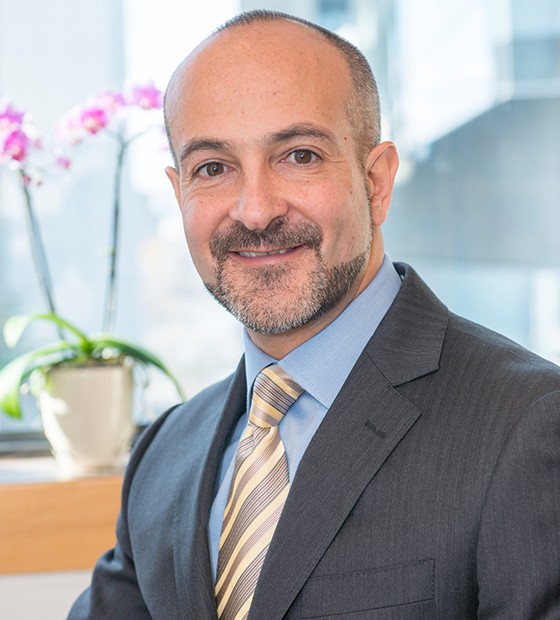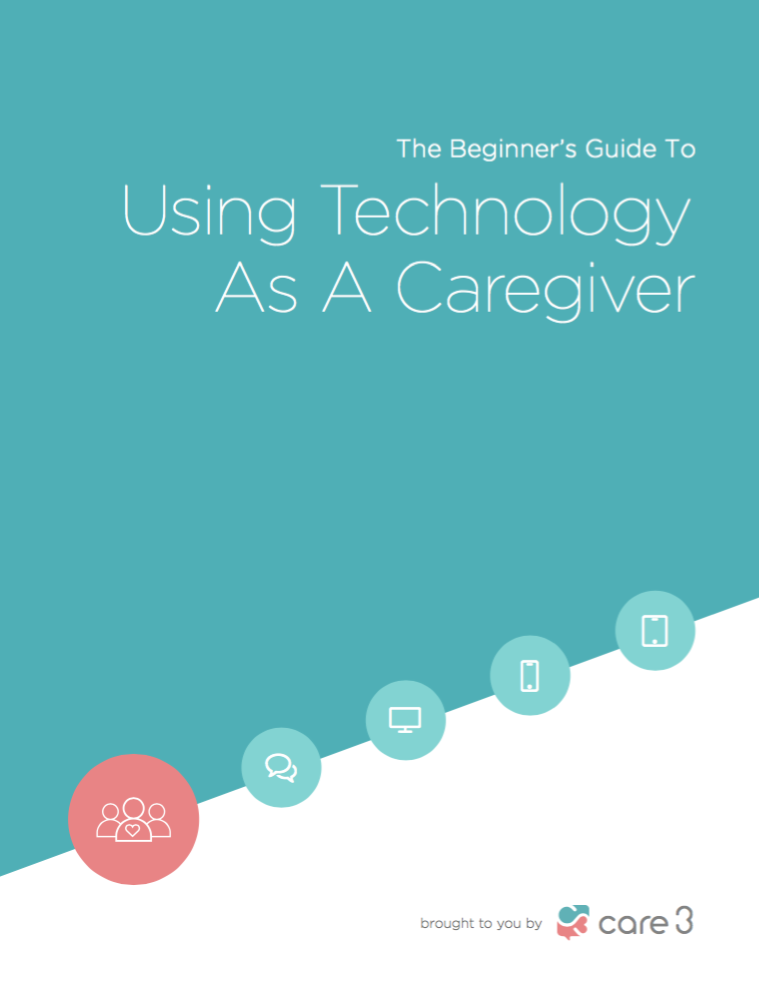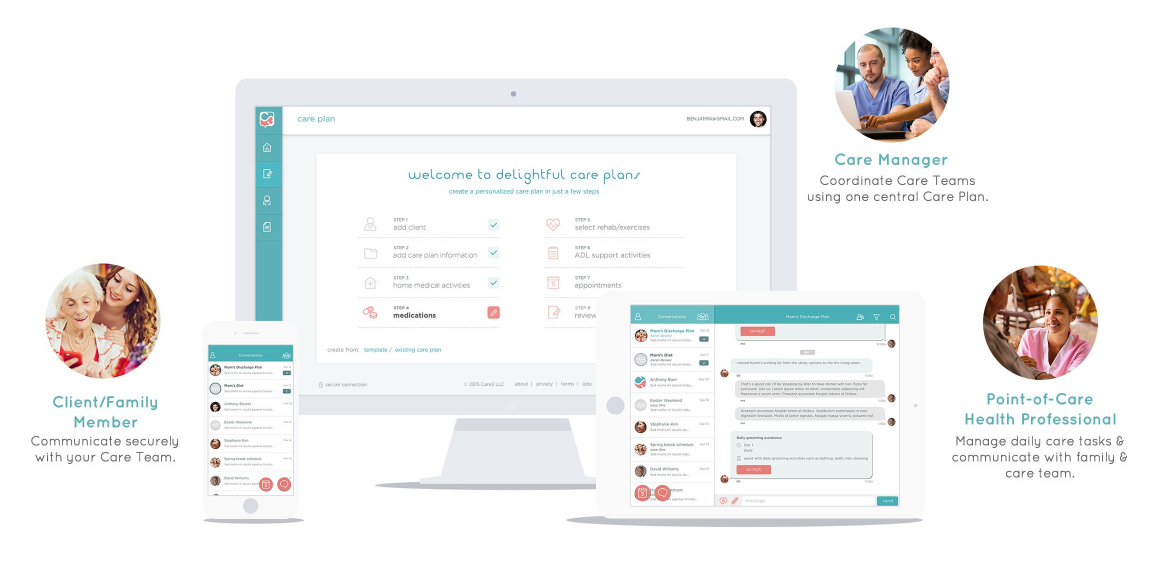Care3 News & Events
Care3 Launches New Android Version of Its Flagship Family Caregiving App
(Los Angeles, CA) – January 15, 2017 – Care3™, a leading developer of mobile health technology, is proud to announce the launch of the new Android version of its flagship family caregiving app. Care3 built the Android app to be used by family caregivers and professional home care aides for collaboration around care delivered in the home.
"We built the Android app for the greatest number of people to benefit from our platform for families," says David Williams, co-founder and CEO of Care3.
The Android app has both phone and tablet versions ready for download.
Download the Care3 Android app on Google Play.
The Importance of the "Done" Button
Successful caregiving depends on having the goals set and the tasks (medications, ADLs, etc.) laid in a routine that you can follow every single day. The faster you get into that routine, that groove, the better your caregiving will be and the better your loved one will feel. To help you get into your caregiving groove fast, we’ve created a Starter Care Plan of eight (8) common care tasks that you can enter into Care3 as sequenced Actions. You can accept the Actions yourself or your Care Team can help out.
But once you receive these Actions, you must accept them—and more importantly, complete them! Once you’ve completed an action, you may just let one person know that it’s done outside of the app. Care3 has an easy way to notify everyone that an Action is complete: the “done” button.
The "Done" Button
In the detail of each accepted Action, you’ll see the “done” button tantalizing you at the bottom. Tapping this button automatically sends a message to everyone in the conversation, notifying them that you completed the Action.
It’s that easy. Give it a try!
Tapping the “done” button is important because it notifies everyone simultaneously that the Action is complete, and also visually verifies that the action is done. This means that there will be no confusion as to whether the action was complete and you don’t have to notify multiple people with multiple calls or texts to let them know you’ve done the job.
So for all Actions that you accept, don’t forget to tap the “done” button. It’s easy to do—and important for everyone on your Care Team.
The Time Is Now to Invest in Digital Health for Underserved Groups
David S. Williams III
By David S. Williams, CEO, Care3. First published on Guest Voices by The Longevity Network 12/14/2016. In the course of raising funds for three different companies, I have talked to many investors: VCs, angels, private equity, all types. When they asked me, why digital health? Why was I building this? My answer over the years has been consistent. I want to create technology for people who typically don't have technology built for them—people of color, seniors, the poor, the disabled. These are the people who need the most help.
All too often the response was something like this:
As a startup you need to build technology for rich people, because they can afford to be early adopters.
Each time I heard that, I got a pit in my stomach. I kept asking myself, do all investors think this way? Thankfully, they all do not, but in my experience, the majority of investors believe the path to startup success is through the affluent.
Technology is supposed to help people who can most benefit from it. Technology is supposed to improve productivity and increase quality of life. In healthcare, the people who need higher productivity and better quality of life, are the underserved—people of color, seniors, the disabled and the poor. Those who don't have access to high quality care, don't have the best health outcomes. Those are the people who should get technology targeted for them.
Unfortunately, the unwritten rule in Silicon Valley is to create technology for rich people. Call it trickle-down technology, and the investment culture is built on that premise.
My personal experience has been in caregiving for my mother. She almost died having me. As far back as I remember, I always helped my mother take care of herself. She was a highly successful woman, earning a doctorate, two master's degrees, Ivy League undergraduate and was valedictorian of her high school class. For all of her success, she had health challenges that worsened dramatically as she aged. I cared for her for 10 years prior to her passing, 2.5 of which she lived with me and my family. There wasn't technology built for my mom as she aged. There were no digital health apps built for me as a caregiver, to coordinate her care and interact directly and confidentially with her professional care teams.
What I've also learned as a parent of a special needs child is that there is very little coordination of care services, and even fewer technology options that actually help people who are disabled to get the best outcomes, to get the best education, to get the best attention on their lives, even though they're the ones who can most benefit from it. I’m not talking about durable medical equipment. I’m talking about digital health solutions, driven by the massive proliferation of mobile technology throughout the world. Until recently, the people who need the technology most, especially in healthcare, have not had access to it. And that's wrong.
This is the first time in history, in which the people who can most benefit from digital health technology, especially the poor and disabled, those who are most vulnerable, have the ability to get tools and solutions in their hands, because of mobile smart devices. The proliferation of wireless broadband and the ability to drive content and applications to a mobile device are now ever-present. The penetration of these devices into people's homes, even at lower income levels, has reached a point of saturation, in which there's no excuse to say that people cannot get access to these types of apps. It's clear that the Digital Divide is becoming an archaic concept.
The “Digital Divide” is no longer an excuse to ignore investing in solutions for the underserved.
Look at recent data from Pew Internet: 77% plus, of households under $30,000 have mobile phones, of which half are smart technology, and that was as of two years ago. We're at the point now, where the populations who have the technology in hand, need only the content and the knowledge to realize the promise of technology on their lives.
And here's the most important development in the quest to serve the most vulnerable with digital health technology solutions: there are massive financial incentives to distribute these solutions to underserved populations for those taking risk for their care. In other words, the buyers for this mobile technology and digital health apps are not the patients and families who may not have the financial means to buy directly, but the entities who benefit financially from their patients’ continued health.
The technology buyers are the payers and providers with incentive to reduce hospital readmissions and avoidable emergency department visits. They gain the most financially. So now you have a financial buyer with a vulnerable and expensive population coupled with the penetration of mobile devices for point-of-care solutions. The power to improve healthcare is literally in the hands of the people who need it most.
Again, this is the first time in history when all of those factors are aligned. It's more than just an opportunity, it's a moral imperative to create technology solutions that help the underserved, that help the people who need it most.
As an African-American man with experience caring for an aging parent and a special needs child, who has the skills of an entrepreneur, who has the background in technology management and development, I take it as a personal responsibility to create technology for people who look like me. To drive new technologies in these communities. If I don’t take on this challenge, who will? This is why I do what I do. This is why our team built Care3. Now is the time to meet the challenge, to create solutions, not for the rich people, but for society's most vulnerable.
About the Author
David S. Williams III is a serial digital health entrepreneur and co-founder and CEO of Care3, a next generation technology platform inspired by his experience caring for his special needs son and the realization that the most vulnerable members of our society including seniors, people of color, and the disabled do not have equal access to healthcare and receive woefully inadequate quality of care in their homes and communities. Care3 is built to fix these unacceptable and unnecessary disparities. David serves on the Board of Advisors of The Price Center for Entrepreneurship and Innovation at UCLA. He is a 2013 Henry Crown Fellow of The Aspen Institute and a member of the Aspen Global Leadership Network. David earned a BS in Economics and Entrepreneurial Management from The Wharton School of the University of Pennsylvania and an MBA in Digital Strategy with a certificate in Corporate Governance from the UCLA Anderson School of Management.
Let's Make This New Year's Resolution Together
As we embark on a new year, and look back at the last, it’s important to recognize that we can’t bring back those we lost. But we can take even better care of those we will have in our lives. Let’s make 2017 a new beginning in how we care for our loved ones.
What You Know That Others Don't
As a member of Care3, you know something that most others don’t when it comes to communicating with family and friends about the health of loved ones:
You know how important it is to protect your loved one’s health information as you’re having text messaging conversations on your mobile device.
Most people still use unsecure apps for healthcare messaging like iMessage, SMS, Facebook Messenger, or WhatsApp. NONE of those apps protect the messages from your device to the cloud AND encrypt the stored data for ultimate security. Having your healthcare messaging conversations on Care3 ensures the protection of any personal health information shared as well as any data stored in the app.
Let's Make This Resolution Together
Let’s make this resolution together: if someone sends you a text message on one of the other messaging apps about the health of family or friends, let them know about Care3. Invite them to the app by starting a new conversation with them. Tell them that it’s not safe to have those kinds of conversations on apps that aren’t secure for healthcare.
If we all do this, then we can provide better care for our loved ones in 2017 by keeping their health information secure, and private from anyone watching while collaborating with family and friends.
In 2017 we will treat our loved ones’ health information with the same love and diligence we use when we care for them.
Share this post with as many people as you can to spread the word. Happy New Year!
Five Ways to Stay in Your Caregiving Flow When Family Comes to Town
The holiday season is filled with happiness, cheer, and family visits. As a caregiver, those family visits can be wonderful, but also introduce interruptions to your routine, especially if your visitors are staying with you in the house.
Here are five ways to stay in your caregiving flow when family comes to town.
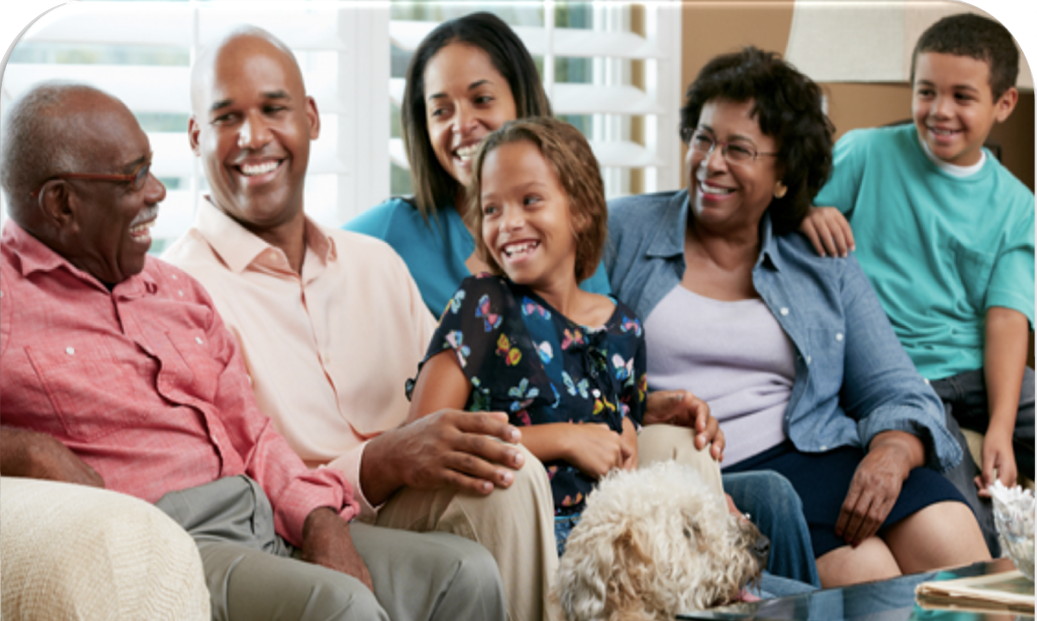
#1. Warn them about priorities.
People like to be treated like guests and get waited on hand and foot when they’re visiting. Even family. Maybe ESPECIALLY family. Be sure to warn them up front that your caregiving responsibilities come before their needs and that they are able-bodied and can do things for themselves. You can be blunt since, well, they’re family. They’ll understand.
#2. Show them what you do each day.
Many family members don’t have a good idea of what gets done each day to take care of your loved one. They’re in the privileged position of not having to do much, if anything, to help out. A clever way to expose them to the routine is to walk them through it all one day as they’re there. At that point, they’ll get the picture. You can also send them the list of daily activities that you’re doing while they’re in town so they get the visual picture ahead of time. Either way, showing them what’s required will result in your gaining newfound respect among family members.
#3. Recruit help.
If you do #2, then this one becomes second nature. Your family can see how to help immediately and see how to help out while they’re in town or in the house. That can get you a few minutes of solitude, respite, or free time to do other things, like holiday shopping for gifts for THEM. Funny how family become very helpful when they know you’re out buying them presents.
#4. Start a group messaging conversation.*
As it becomes clear what is required to care for your loved one, family will want to be kept updated periodically on status. A group messaging conversation can keep everyone in the loop, and also increases overall communication between remote family members, which is actually nice. Using your caregiving role to bring family closer together this holiday season can be a very positive side effect of their visits.
#5. Ask for ongoing help.
Having earned the respect of family members for your caregiving role, the other benefit is feeling more comfortable asking for help. In the group conversation you can ask if anyone can do a particular task. No matter how small, people will feel more connected to you and want to help. This is an easy way to get them to contribute.
*NOTE: Make sure you’re using a HIPAA-compliant messaging app, like Care3, for this group conversation. When sharing personal health information of a patient, the data must be confidential and protected. The popular messaging apps like FB Messenger, iMessage, and SMS are NOT secure for healthcare conversations.
So take advantage of the family time this holiday season while staying in your caregiving flow. Use this time to share what you’re doing in your caregiving role and recruit others to help, not only while they’re visiting, but beyond as well.
Happy Holidays!
Interview with Joe Betancourt, MD - MGH Office of Disparities Solutions - Part 2
Joe Betancourt, MD
In Part 2 of this two part powerful interview, Dr. Betancourt shares his thoughts on how technology can help reduce health disparities and how hospitals and health systems can show leadership in driving better care and outcomes for all.
Learn more about MGH Office of Disparities Solutions.
dsc_onegoal_log-2010_medium
Interview with Joe Betancourt, MD - MGH Office of Disparities Solutions - Part 1
joebetancourt
In Part 1 of this two part powerful interview, Dr. Betancourt shares his thoughts on health disparities among racial and ethnic groups and what hospitals and health systems can do to promote equality of care and outcomes.
Learn more about MGH Office of Disparities Solutions.
dsc_onegoal_log-2010_medium
Five Must-Have Features for Family Caregivers Using Mobile Apps
Using mobile apps for caregiving hasn't caught on as much as it could. According to a caring.com survey, only 7% of family caregivers have tried using a mobile app to help with family caregiving. That has to change. In order for you to try an app, however, you should know the features that are must-haves. Check out the five that we believe are critical to any mobile technology for caregivers.
For a deeper dive, check out our FREE comprehensive guide, The Beginner's Guide to Using Technology as a Caregiver.
Mobile
Caregiving moves at the speed of life. Anytime, anywhere, something can happen, and something has to be done. So any technology for caregivers must be mobile. You're almost not in the game anymore if you don't have some kind of mobile presence or a mobile app – something that allows things to happen anytime, anywhere.
Secure
HIPAA compliance is no longer an option when it comes to sharing health information between patients and professionals using mobile devices. Therefore all mobile apps for healthcare must be secure, private, and guarantee the confidentiality of patient/family to provider communication.
Simple
The technology cannot be complicated. No one in a care situation can spend a ton of time trying to learn a new app, or some kind of new technology, when caring for a loved one and/or manage care. Finding the time to learn something tricky just isn't going to happen. It has to be simple, and it has to be intuitive, with no new behaviors.
Shareable
People want to be kept up-to-date on how patients are doing. Whether those people are helping to deliver care or not, they want to know at least what's going on, and that's why "shareability" matters. That way, you can alert family and friends of all the things that are happening quickly and effectively. Increased efficiency with updates is what the technology should provide to be ultimately shareable.
Accountable
The last one – and most important – is accountability. Caregiving is about getting it done, getting it done right, and getting it done on time, as prescribed. Not doing it – meaning failing to adhere to the care tasks and care plan – can have serious consequences. Sometimes life and death consequences. The technology must communicate, notify, and record when a task is performed. That way, we and the other people on the care team can know if there are any barriers or challenges to getting things done per the doctor's instructions. We have to follow the plan to the letter, because not doing so can have devastating effects.
Does your healthcare application meet these criteria? If not, then it's time for you to download and install the Care3 mobile app. It's 100% FREE.
TripleTeam Podcast Episode 2: Using Technology for Caregiving Can Make Your Life Much Easier
After reviewing the major caregiving apps for consumers on the market, it became very clear that none meet the criteria needed to manage care outside of the hospital. Below are five necessary features of any good caregiving technology. You can also listen to our podcast (subscribe in iTunes - search for Care3 TripleTeam Podcast) where we detail technology for caregivers and introduce some new ways to get the most out of mobile apps.
TripleTeam Podcast Episode 2: Interview with Donna Benton, PhD - Director of USC Family Caregiving Support Center
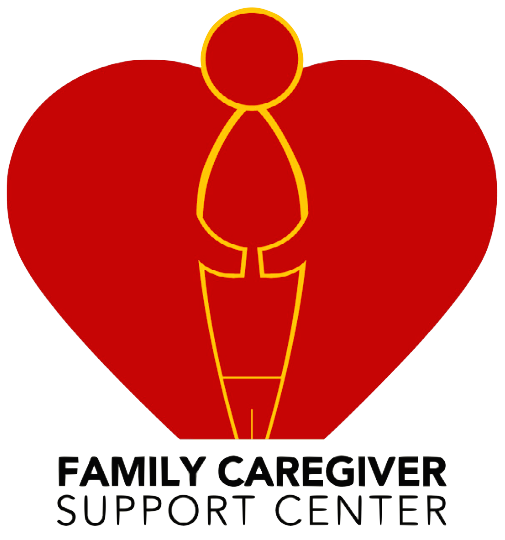
 We recently announced our joint collaboration with the USC Family Caregiving Support Center to help people in Los Angeles County better care for loved ones as well as for themselves. Donna Benton, PhD, Director of the USC Family Caregiving Support Center joins us on the Care3 TripleTeam Podcast to discuss The Center, the challenges of family caregiving, and how technology can be used to make caregiving easier, more efficient, and produce not only results, but even time for rest.
Care3 Collaboration Announcement
We recently announced our joint collaboration with the USC Family Caregiving Support Center to help people in Los Angeles County better care for loved ones as well as for themselves. Donna Benton, PhD, Director of the USC Family Caregiving Support Center joins us on the Care3 TripleTeam Podcast to discuss The Center, the challenges of family caregiving, and how technology can be used to make caregiving easier, more efficient, and produce not only results, but even time for rest.
Care3 Collaboration Announcement
Welcome to the Care3 TripleTeam Podcast!
People have told the team at Care3 time after time that we should share our stories, those of our community, and our interactions with thought leaders more. How can we say no to that? Introducing the Care3 TripleTeam Podcast (#TripleTeam). TripleTeam Episode 0: Welcome to the Care3 TripleTeam Podcast!
Why did we title our podcast "TripleTeam"? Because this is the team that is most optimal to drive the best health outcomes: patients, family, and professionals. With that TripleTeam, we can achieve all of our health outcomes goals for everyone. That's right. Everyone.
Our corporate mission is to help reduce disparities in health outcomes, quality, and access among underserved populations including people of color, the disabled, the poor and rural residents. Technology can help achieve these goals and Care3 is determined to be a massive driver of change in this area.
Thanks for listening to the TripleTeam Podcast. Find us on iTunes and subscribe! And make sure you have your own "triple team" in place to care for yourself and loved ones.
Care3 and USC Family Caregiver Support Center Team Up to Help Families Coordinate Care
(Los Angeles, CA) - September 12, 2016 - Care3™, a leading developer of mobile health technology, has announced a partnership with the USC Leonard Davis School of Gerontology and their Family Caregiver Support Center to provide care planning and secure communication resources to all Los Angeles Caregiver Resource Center clients and their families.
"We are honored to be chosen by USC and the Family Caregiver Support Center,” says Care3 Co-Founder and CEO David Williams, “Families receiving services from the LACRC are typically underserved and have low access to healthcare in their communities. Care3 can help bridge that care gap and coordinate care between family and providers."
Care3™ plans to work with hospitals, health insurers, and other health entities to digitize and mobilize their care instructions while also making them more consumer friendly. Care3 will deliver each task step-by-step over their HIPAA-compliant care-sharing mobile app.
"We can use Care3 to empower our caregiver clients to not only take care of their loved ones, but take better care of themselves as well," says Donna Benton, PhD, Director of the USC Family Caregiver Support Center (http://fcscgero.org).
Family caregivers often develop illnesses while caring for loved ones. The collaboration will address caregiver stress, burnout, and other health issues.
About Care3™
Founded by three former Aetna executives with successful entrepreneurial backgrounds in consumer and enterprise health technology, Care3 elegantly combines patient and family engagement with post-acute care coordination on the same mobile and web-based platform to improve outcomes and reduce costly hospital readmissions for underserved populations including seniors, people of color, and the disabled. Care3 is inspired by the realization that the most vulnerable members of our society do not have equal access to healthcare and receive woefully inadequate quality of care in their homes and communities. Care3 is built to fix these unacceptable and unnecessary inequities. Learn more at http://care3.co/blog.












